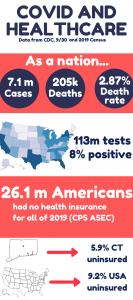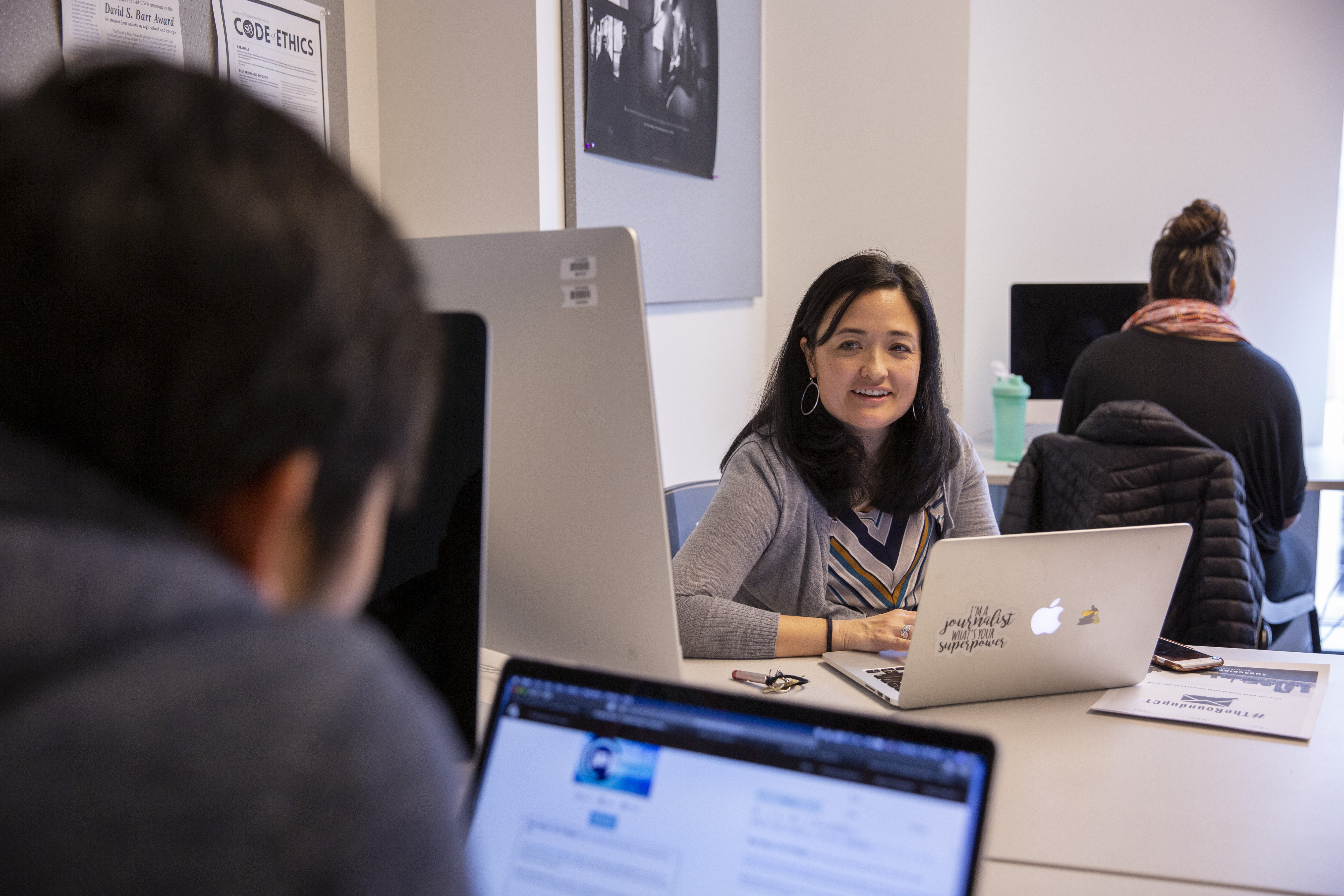As the 2020 U.S. Presidential election and the COVID-19 pandemic collide, voters face new challenges, including how to cast their vote and where to find reliable information.
This semester, UConn journalism students launched Crash Course: Election 2020, a digital newsletter created to provide non-partisan information for voters about their choices come Election Day.
They aim to cut through the noise to help young and first-time voters learn what’s at stake on their ballot, and why it matters.
“We put an emphasis on neutral and truthful perspectives, so there’s not a political outcome we’re going for,” says Allison O’Donnell ’20 (CLAS), a journalism major with a political science minor who is one of the writers. “We want people to make well-informed decisions and give them the knowledge they need to make an informed vote.”

The digital newsletter focuses on a new topic each week, mixing national and local headlines, including student debt, the Supreme Court, environmental issues, political debates, and more. The newsletter is part of Associate Professor of Journalism Marie Shanahan’s publication practice course on election coverage, and includes O’Donnell, Ashley Anglisano ’20 (CLAS), Fiona Brady ’21 (CLAS), Ben Crnic ’21 (CLAS), and Mike Mavredakis ’22 (CLAS) as writers, with Shanahan as the editor.
“We are a real newsroom and I am the editor,” says Shanahan. “Everyone is working under deadline pressure. They are expected to be accurate and fair and interview a diverse range of sources every week.”
“When reporting stories, we make sure we talk to all voices and perspectives,” says Anglisano, a journalism and communication double major with a political science minor, and news editor of the Daily Campus student newspaper. “In the conversation starter section [of the newsletter], we pose questions anybody can discuss.”
For instance, during the week in which the Senate Judiciary Committee held hearings on the nomination of Amy Coney Barrett to the Supreme Court, they interviewed UConn political science professor Kimberly Bergendahl for additional insight.
The name “Crash Course” relates to the idea that, for young voters or those new to politics, there can be a lot to catch up on. Their work has been republished in local news outlets, including the Connecticut Health Investigative Team, and the CT Mirror.
“When I first got into the political sphere, I felt like there was so much for me to learn about before even entering the conversation, which makes it difficult for people to get invested because it is a time commitment,” O’Donnell says.
“Before creating the newsletter, we talked to many political journalists out reporting on these issues and asked what they thought would be important to focus on,” says Anglisano. They also each asked 10 friends what issues they were interested in learning more about this election season.
They then created a timeline of topics centered around a weekly theme to ensure they would cover a variety of those issues.
“One thing we definitely heard was to not just focus on the presidential election, but when it comes to some of the issues college students are focused on, such as student debt and police accountability, they have to be informed on the state level as well,” says Anglisano.
In an interview quoted on the newsletter’s webpage, Hartford Courant political reporter Daniela Altimari told the students, “What happens in the presidential race is so far from the direct impact of what happens to [college students], whether it’s COVID, whether it’s tuition increases, whether it’s unemployment benefits. Those are all handled on the state level, and the state legislative races are way more important and will impact student’s lives much more directly, much more quickly, than the presidential race ever would.”
When asked how they would know if their newsletter successfully reached and informed voters, O’Donnell and Anglisano say voter turnout would be a major indicator.
“We have access to all these potentially first-time voters and people who may feel neglected by the political system, so we want to give them a roundup of political news,” O’Donnell says.
“The young vote is a tough one to get, especially with college students, because we’re busy and might not be as informed on issues as we’d like to be,” Anglisano says. “Just seeing a higher turnout of college students and voters across the country, and even just here in Mansfield, will make us feel like, maybe we had the power to inform those people.”
On a personal level, having the opportunity to bring their political science and journalism education together has strengthened their skills as reporters.
“The newsletter has just been a great opportunity to cover things at the national scale that a college journalist might not be able to cover,” says Anglisano.
The team plans to continue publishing the newsletter even after the election.
“No doubt there will be plenty of news to explain once the votes are tallied,” says Shanahan.



